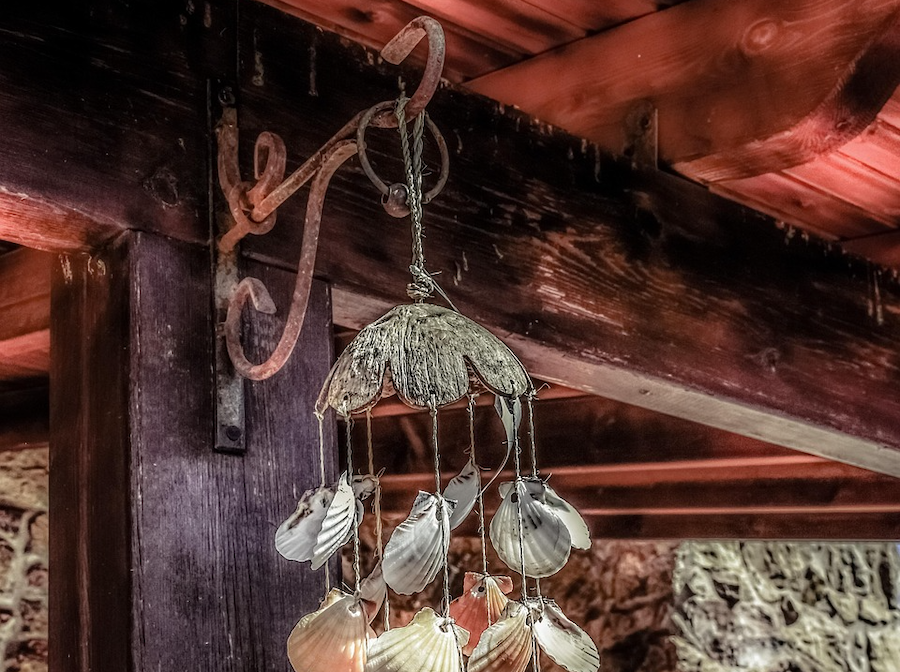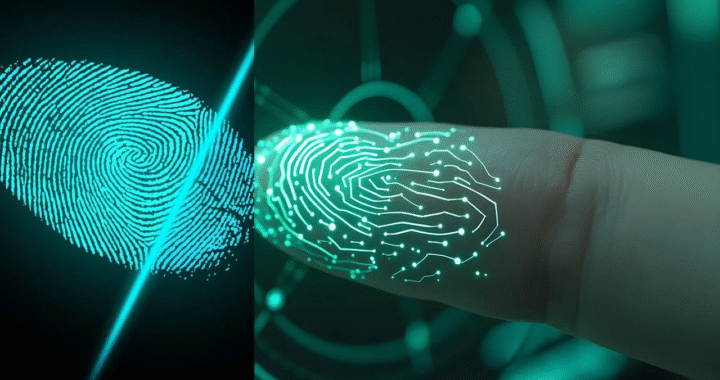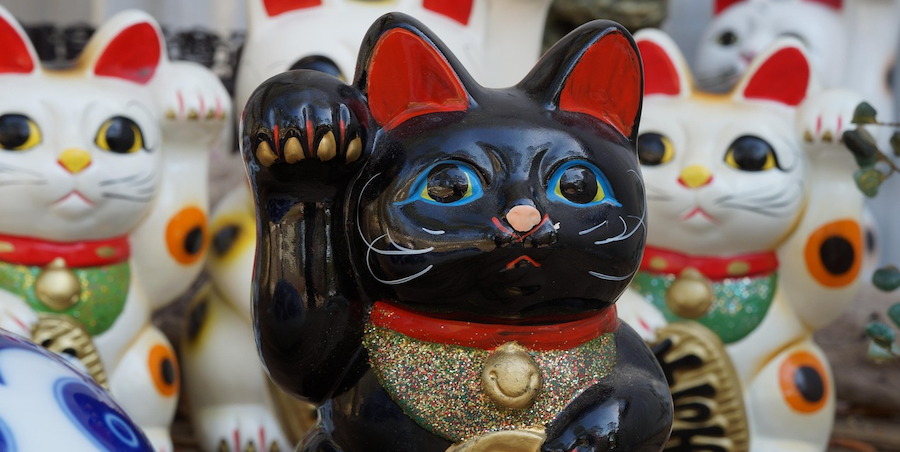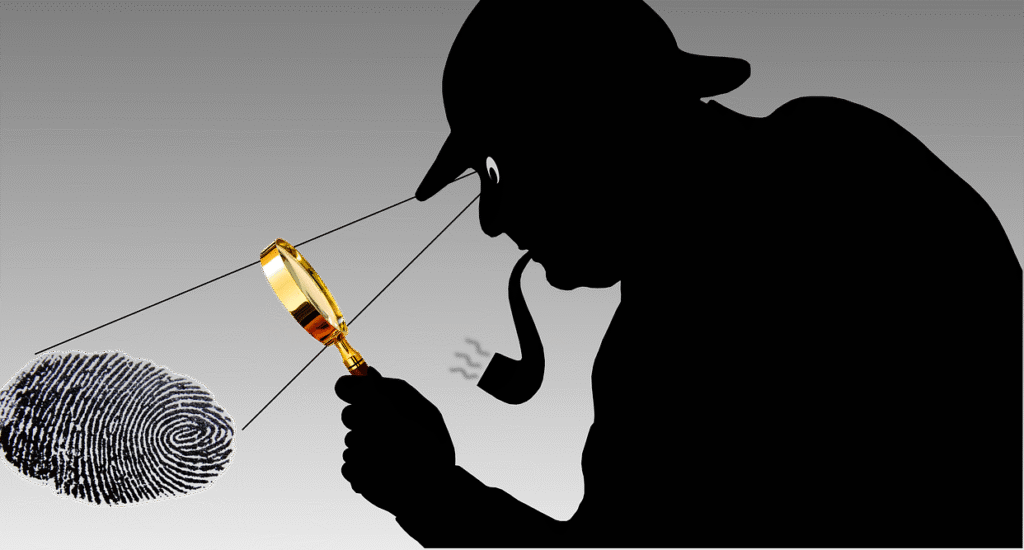Why “authentic feng shui” is a problem worth examining
Open a search engine and type “authentic feng shui”. The results show hundreds of consultants and schools proclaiming their practice the real or traditional version of feng shui. Some promise “classical” formulas dating back thousands of years, others advertise “authentic” certificates and claim to possess secret lineages. Yet most of these sites also display a basic mistranslation of feng shui: they define it as “wind and water”, suggesting two disconnected elements. Chinese‐language dictionaries and etymological sources translate the term literally as wind–water, and the earliest written sources emphasise a single relational concept rather than two separate things. This everyday misinterpretation captures a deeper problem: claims of authenticity often mask ignorance of history, language and practice. Read more about feng shui means wind-water, NOT wind and water
This blog critically interrogates the marketing labels “authentic feng shui” and “traditional/classical feng shui”. It asks: What does authenticity mean? When and where might “authentic” feng shui begin? What counts as “traditional” or “classical” in a practice with a long, diverse and contested history? Why is “wind–water” a better translation than “wind and water”, and how does mistranslation influence the politics of authenticity? In addressing these questions, the essay invites readers to look past superficial branding and instead consider lineage, scholarship, translation and evidence. The aim is not to dismiss practice or lived experience; rather it is to cultivate a nuanced understanding of feng shui’s history and contemporary uses.
What does “authentic” actually mean? Philosophical and everyday uses
In everyday speech, something is called authentic when it is genuine, not fake or corrupted. The term implies that an object or practice is what it professes to be and of undisputed origin or authorship. The Stanford Encyclopedia of Philosophy notes that when authenticity is applied to persons, it describes acting in accordance with one’s true desires and beliefs; authenticity involves being faithful to oneself and not merely conforming to external expectations. Two points follow from these definitions.
First, authenticity is always relational and contested: to declare something authentic is to compare it with an original and to make a claim about continuity or fidelity. Authenticity therefore depends on who is making the judgment, to which tradition or standard it is being compared and what counts as legitimate evidence. In the context of feng shui, authenticity might refer to closeness to certain Chinese texts, to specific regional lineages, or to practices observed in early China and modern Hong Kong. Different communities will weigh these standards differently.
Second, authenticity can be co‑opted as a branding device. In an era of cultural tourism and wellness marketing, the adjective “authentic” often functions rhetorically to differentiate one product from competitors and to borrow the authority of imagined origins. Yoga studios advertise “authentic yoga”, restaurants sell “authentic Italian” food and healing gurus promise “authentic shamanic initiation”. In such contexts the word signals exclusivity and legitimacy rather than a careful historical claim. The same is true in feng shui: “authentic feng shui” appears regularly on websites, but seldom with clear criteria or scholarly references.
Understanding these philosophical and sociological nuances prepares us to examine how authenticity is invoked within feng shui. It warns us that claims to authenticity may reveal more about contemporary desires – such as a wish for authority, prestige or cultural identity – than about historical continuity.
A short, evidence‑informed history of feng shui and why “classical” is complicated
Early practices and the emergence of the term
Feng shui’s roots lie in very old Chinese practices of divination, geomancy and site selection for burials and dwellings. Archaeological evidence suggests that Neolithic communities already oriented graves and villages according to cosmological beliefs. This early system of cosmic geography was known as Kan Yu, translated as the “observation of heaven and earth”. The term feng shui (風水, wind–water) first appeared in the 4th‑century Book of Burial (《葬書》) attributed to Guo Pu. The text famously states, “Qi rides the wind and stops at water”– qi is dispersed by wind and gathers near water – thus emphasising the importance of sheltering a site from harsh winds and locating it near beneficial water. The expression “wind–water” therefore refers to the dynamic unity and interplay of environmental forces rather than two elements that need to be connected.
During the Song dynasty (960–1279), feng shui flourished as a synthesis of astronomy, geography, Daoist cosmology and Confucian ritual. At this time two major schools emerged. The Form School focused on topography and landscape forms. It used metaphors of protective hills (Black Tortoise), guiding ridges (Green Dragon) and supportive slopes (White Tiger) and so on, to choose auspicious sites. The Compass School employed the magnetic luopan to calculate auspicious orientations based on the Eight Trigrams, the Five Elements and astrological charts. Later periods developed hybrid techniques and numerous regional variations. These historical developments complicate any claim that there is a single “classical” feng shui. As Ole Bruun’s An Introduction to Feng Shui notes, the feng shui tradition is inseparable from Chinese cosmology and popular religion and is deeply intertwined with social and political processes. It consists of diverse practices and has always been interpreted and reinterpreted according to context.
Diversity, suppression and revival
Feng shui practices varied widely across regions and dynasties. Imperial administrations sometimes used geomantic principles to plan cities and tombs, while village communities relied on local masters to select burial sites or align houses. During the early twentieth century, Chinese reformers and the communist state suppressed feng shui as superstition, leading to decline in mainland China. Nevertheless, feng shui survived in Taiwan, Hong Kong and overseas Chinese communities, and since the 1980s it has become a global movement with professional associations, thousands of publications and hundreds of practitioners. Modern schools blend traditional techniques with New Age spirituality and personal development as well as environmental psychology and corporate consultancy. Ole Bruun emphasises that feng shui has never been an exact system but rather “a broad contested field of knowledge and practice” with tremendous variation. Standard placement rules are only a small part of a tradition that relies heavily on subjective interpretation by specialists. Each master develops his or her own speciality and style, making universal notions of “classical” or “authentic” misleading.
The global spread of feng shui has sparked sociological debates about why such practices flourish in modern societies. Bruun notes that rapid modernisation, individualisation and ecological crises have uprooted traditional life forms, creating insecurity and fragmentation. In response, people seek new movements that promise personal solutions and a sense of meaning. Sociology therefore frames feng shui not as a relic of the past but as a contemporary response to the uncertainties of modern times.
Implications for the term “classical”
Given this historical diversity, the label “classical feng shui” is problematic. Which period counts as “classical”? The Warring States era when Kan Yu practices emerged? The Song dynasty when the two major schools were codified? The Ming and Qing periods when manuals proliferated? Or the 20th‑century Hong Kong manuals that popularised certain methods? Without specifying a temporal and regional frame, claims to “classical” legitimacy collapse into vague appeals to antiquity.
In short, there has never been a single, fixed “feng shui” to which all contemporary variants could be compared. Any assertion of classical purity must therefore be understood as an act of selective remembering, and often, as we shall see, an invented tradition. Read more: Classical feng shui vs contemporary feng shui

Authentic compared with what? Schools, lineages and invented traditions
Competing schools and the myth of a single lineage
Modern feng shui includes numerous schools: in addition to the Form and Compass Schools, there are Black Sect Tantric Buddhist (BTB) which includes among other concepts such as “three‑door bagua” methods introduced to the West in the 1980s, intuitive feng shui that integrates environmental psychology and human biology, and other eclectic approaches. Corporate feng shui applies geomantic principles to office layouts, while “scientific feng shui” or “evidence-based feng shui” attempts to subject the art to empirical testing. Each school often claims closeness to “the authentic tradition” and emphasises its own lineage or secret formulae. Yet these lineages are themselves modern constructions: many so‑called “ancient” teachings were codified in the twentieth century, and some manuals reflect nationalist or commercial interests.
Invented tradition and the politics of authenticity
The historian Eric Hobsbawm introduced the concept of invented tradition to describe practices that present themselves as ancient and timeless but are in fact recent constructions designed to promote specific values. Invented traditions help legitimise social structures, reinforce the identity of dominant groups and tie contemporary political agendas to the illusion of historical continuity. They may foster social cohesion, legitimise institutions or inculcate behavioural norms. In the context of feng shui, modern certification systems, lineage claims and standardised manuals can be understood as as invented traditions. The politics of authenticity involve not only the construction of tradition but also the exclusion of rival interpretations. When one school claims to be “authentic”, it implicitly delegitimises others as corrupt or diluted. Such claims can reinforce hierarchical power relations between masters and disciples or between metropolitan and diasporic communities. They also intersect with nationalist discourse: some Chinese authors argue that only native practitioners possess true insight, while others portray Western adaptations as misguided.
Why “wind and water” misleads: the translation problem
Perhaps the most ubiquitous misunderstanding in English‑language feng shui literature is the translation of feng shui as “wind and water”. The Chinese characters 風 (feng) and 水 (shui) form a compound noun rather than two separate elements joined by conjunction. Literally, the phrase means “wind–water”, denoting the interplay of moving air and flowing water as a single spectrum of qi dynamics. Many English writers mistakenly insert “and”, implying that wind and water are independent objects that are disconnected. This misrepresentation encourages a crude element‑based reading, where wind and water are manipulated to balance energies, rather than an understanding of how environmental flows shape qi. Practitioners who call themselves “authentic” yet repeat the “wind and water” translation reveal a superficial grasp of Chinese language and cosmogony, not to mention the Taoist philosophy behind it all. Correcting this translation is not a pedantic exercise; it highlights how linguistic nuance influences metaphysical interpretation. Read more about feng shui means wind-water, NOT wind and water
Recognising invented traditions in modern practice
Identifying invented traditions in feng shui requires examining when and why certain practices were codified. For example, the Black Sect school emerged in the 1980s as a syncretic method blending Tibetan Buddhism, Taoism and New Age thought. Its founder positioned it as a continuation of an esoteric lineage, yet historical evidence suggests that much of its ritual is modern. Similarly, some schools emphasise the Nine Palace system or Flying Stars formula, claiming ancient origins, but these systems were formalised only in the 19th or 20th centuries. Manuals that designate specific colours or objects for each compass sector are likewise recent inventions, sometimes influenced by modern marketing and interior design. Recognising these inventions does not mean dismissing them; rather, it invites practitioners and clients to be transparent about the provenance of their methods and to avoid conflating innovation with antiquity.
Critical questions when assessing authenticity
When evaluating claims of authenticity, readers can ask several questions:
-
Lineage clarity: Does the practitioner specify a lineage or particular teacher? Can they trace their knowledge to identifiable texts or masters?
-
Textual engagement: Do they demonstrate familiarity with classical Chinese texts, or do they rely solely on modern manuals? When citing formulas, do they reference original sources or scholarly translations?
-
Historical awareness: Are they aware of the diversity and evolution of feng shui across regions and periods? Do they acknowledge that multiple schools exist and that no single method monopolises authenticity?
-
Methodological honesty: If they claim scientific validation, do they reference specific studies or provide clear criteria for success? Are they open about the limitations of their approach?
-
Ethical practice: Do they respect clients’ beliefs and budgets, avoid exploiting fear of misfortune and avoid making extravagant promises?
Feng shui consultants who meet these criteria may not use the word “authentic” at all. Instead, they emphasise professionalism, careful scholarship, cross‑cultural competence and a willingness to engage with evidence.
Tradition, innovation and living practices: can feng shui be both authentic and evolving?
The tension between tradition and innovation is not unique to feng shui. Religious practices, crafts and healing systems evolve continuously, incorporating new knowledge and adapting to changing circumstances. The same is true of feng shui. Despite claims of ancient purity, the tradition has always been dynamic. New techniques have been incorporated at different times: the magnetic compass, for example, may have been first invented for feng shui. Modern practitioners incorporate ideas from environmental psychology, architecture, ergonomics and sustainability. Some design consultants emphasise ventilation and natural light, aligning feng shui with basic principles of healthy building design. Others apply feng shui to corporate strategy, urban planning or landscape architecture.
Scientific and cross‑disciplinary approaches
Attempts to make feng shui more evidence‑based have been ongoing since at least the 1990s. Michael Mak and Albert So’s book Scientific Feng Shui for the Built Environment seeks to place feng shui on a scientific footing. A book review summarises that the authors argue that without scientific methods, feng shui would easily fall prey to superstition; they aim to explain how scientific methods such as naturalistic observation and case studies can be applied to feng shui. They discuss differences between Western and Eastern approaches to knowledge and stress the importance of understanding Chinese terms and translation issues. The book also compares Western sustainable design principles with feng shui concepts, highlighting that harmonising the built and natural environment underpins both approaches. While such attempts may not fully validate specific geomantic formulas, they demonstrate that dialogue between feng shui and contemporary science is possible.
Sociological and ecological research
Modern empirical studies investigate feng shui’s social and ecological impacts. A 2023 systematic review found that feng shui practices influence housing decisions, contribute to habitat diversity in feng shui forests and affect wind fields and microclimates. Hedonic pricing studies in Taiwan reveal that houses violating certain feng shui taboos suffer significant price discounts. Surveys of Chinese-Americans show a willingness to pay more for homes designed with feng shui principles. These findings show that feng shui beliefs have tangible economic and ecological effects, even if the underlying mechanisms remain contested. Integrating such research with traditional practices may offer a way forward: authenticity could mean transparency about sources, methods and limitations, coupled with openness to critique and evidence.
Rethinking authenticity as transparency
Rather than viewing authenticity as a fixed claim to ancient purity, we can reframe it as honest transparency about sources and methods. An “authentic” practitioner may explicitly state that they follow a particular lineage, type of feng shui, cite the texts they use, explain how they adapt practices to modern contexts and acknowledge the limits of their knowledge. They may be willing to incorporate insights from environmental psychology, ergonomics and sustainability while remaining faithful to core cosmological concepts. Authenticity thus becomes a matter of intellectual integrity rather than ancient origins.
Key questions for reflection
Throughout this blog, several questions have been posed implicitly; here they are explicitly. Readers are encouraged to contemplate them as they explore feng shui literature and encounter practitioners:
-
What would authentic feng shui have to look like, given that feng shui has always been diverse and contested? Which period or region should be the benchmark? Is authenticity a matter of technique, lineage or ethical practice?
-
Does authenticity mean closeness to early Chinese practices, fidelity to specific Ming or Qing manuals, or loyalty to twentieth‑century Hong Kong teachings? Or can authenticity be plural?
-
Is translation part of authenticity? If “feng shui” is mistranslated as “wind and water”, what else might be distorted when Chinese terms are rendered into English without nuance?
-
How can we distinguish between authentic lineage, sincere practice and clever branding? What criteria can help us assess claims of authenticity?
-
Can there be an “authentic” Western feng shui that is transparent about being a modern hybrid yet still rooted in Chinese concepts? What responsibilities do Western practitioners have when adapting feng shui?
Practical takeaways for readers
Questions to ask when someone advertises “authentic feng shui”
-
What do you mean by “authentic”? Ask the practitioner to explain their definition. Do they refer to specific lineages, texts or historical periods? Can they specify sources?
-
What is your training and who were your teachers? Legitimate masters usually state their teachers and may provide evidence of study.
-
Do you read classical Chinese? While not all practitioners need to be scholars, those claiming authenticity should show some ability to engage with original sources or reliable translations.
-
How do you handle modern evidence? Are they aware of empirical studies and open to integrating new knowledge? Do they acknowledge the limits of their approach?
-
How do you ensure that recommendations are culturally sensitive and ethically responsible? Responsible practitioners avoid instilling fear and respect clients’ agency and budgets.
Signs of a thoughtful, historically informed feng shui consultant or teacher
-
They describe feng shui as a diverse tradition rather than a rigid system.
-
They cite historical sources, show familiarity with Chinese cosmology and avoid simplistic translations like “wind
andwater”. -
They are transparent about their methods and acknowledge when a practice is an adaptation or innovation.
-
They incorporate insights from environmental psychology, architecture and sustainability, bridging tradition and modern science.
-
They respect clients’ beliefs without exploiting superstition and avoid promising guaranteed outcomes and fear-based solutions.
Balancing respect for tradition with healthy critical attitude
Respecting tradition does not mean suspending critical thinking. It involves appreciating the historical and cultural contexts of feng shui, recognising its symbolic richness and acknowledging its role in shaping social and ecological behaviour. At the same time, it requires scepticism towards ahistorical claims, mistranslations and marketing hype. Readers can enjoy the aesthetic and philosophical insights of feng shui – its emphasis on flow, balance and harmony – while remaining aware of the politics of authenticity and the need for evidence.
Authentic path in feng shui practice
As feng shui practitioners we guide others toward clarity and harmony in their lives and spaces, yet we sometimes overlook our own journeys. Authentic practice is not only about adhering to a lineage or technique; it is about aligning our professional work with our inner values and unique voices. To do that, we need to pay attention to our own processes of self-discovery and learn to trust the subtle signals within, rather than relying on external validation.
Reflective prompts
-
Finding and trusting your voice: Reflect on how you discovered or are discovering your authentic voice as a feng shui practitioner. Which experiences, evidence, research, teachers or clients have encouraged you to stay true to yourself? How do supportive mentors and communities nurture your confidence? Notice when comparison or differentiation with other practitioners or feng shui styles arises and reflect on ways to let go of that impulse, so you can create from a place of inner clarity and alignment as well as integrity and self-knowing.
-
Tools and practices for self‑alignment: Consider which feng shui adjustments and complementary practices help you feel centred and clear. Are there specific room arrangements, compass readings, symbolic objects or rituals that support your equilibrium? Beyond feng shui, what other modalities or contemplative disciplines – such as meditation, reflective journaling, mindfulness or breathwork – enhance your self-awareness and strengthen your intuition? Do you have a mentor or supervisor with whom you consult on regular bases as part of continues professional development?
By engaging with these prompts you can deepen your relationship with your own work. Authenticity is a continuous, reflective process, not a status to attain.
Conclusion
The label “authentic feng shui” appeals to a desire for legitimacy and continuity in a world of rapid change. Yet as this blog has shown, feng shui has always been diverse, context‑dependent and subject to reinterpretation. The term feng shui itself means “wind–water”, a compound idea describing the relationship between movement and containment of qi. It does not denote two separate elements, and mis‑translation reveals how easily superficial knowledge can distort tradition.
Authenticity in feng shui should not be reduced to lineage branding or appeals to antiquity. Instead, it should be grounded in transparent engagement with sources, awareness of historical diversity and openness to evidence and critique. Modern innovations – scientific studies, sustainability concepts and cross‑cultural adaptations – need not be rejected; rather, they can be incorporated into a living tradition, provided they are acknowledged as such. By asking critical questions, understanding the history of feng shui and appreciating its philosophical depth, readers can navigate claims of authenticity with discernment and respect.
Reference
Bruun, O. (2008). An introduction to feng shui. Cambridge University Press.
Cisek, J. (2006, May 14). Feng shui means wind water, not wind and water: Here is why. Feng Shui London. https://www.fengshuilondon.net/feng-shui-means-wind-water-not-wind-and-water-heres-why/
Stanford Encyclopedia of Philosophy. (2018). Authenticity. Stanford University. https://plato.stanford.edu/entries/authenticity/




